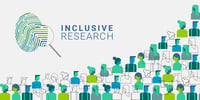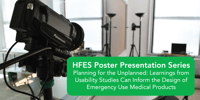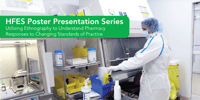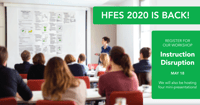7 Practical Tips to Get More Value from Eye Tracking Research
/ in research , study design , usability testing , data visualization , eye tracking , human factors , innovative technology , medical product design , user research / by Ranjan NayyarWorking on numerous eye tracking studies over the last two years, I feel I have gained the authority to say a word or two on eye tracking research. The research method is critical to our work at Design Science and has found itself to be ever more promising our clients and to us than ever before. Using eye tracking successfully in the field requires both a firm grasp on the theory and practical experience. Following are some actionable insights from my experience conducting eye tracking research:
1. Focus on your study design
The first part to understanding this point is remembering that the eye tracker is only a tool. Using the tool to gain the information that you seek requires a researcher to take a critical look on the design of the study. It is easy to be swayed by the thought that the eye tracker will provide you with endless information that you will then be able to convert into insights and recommendations however often this is not the case. Think about what you want to learn when you put the eye tracker on the participant. Think about the tasks you will ask them to do, the questions you will ask them, and finally about how you will then use the data. I also recommend trying out your study design before implementation and reevaluating your research strategy based on what you find.
2. understand FIXATION METRICS
Definitions for various fixation metrics (e.g. total fixation duration, time to first fixation, etc.) are readily available online however few resources explain which ones are useful for your research and how to use them effectively. A good way to overcome this issue is to generate data from a trial study whose results are easily predictable. If your analysis does not reveal what you already know to be true, you are either using the wrong metric or you are analyzing it incorrectly.
Another important point to remember is that not all research tasks will result in a variation in every metric. For e.g. some metrics might be dependent on the cognitive load on the participant during a task.
3. bolster your data with other research methods
In most research studies the information we seek is more than just whether someone saw something. In all such situations, eye tracking research alone will not give you the results you seek. Using it in conjunction with other research methods is critical to answering your research questions. Additionally, its a good way to make sure the data you are collecting is correct. In simulated use studies our research tasks include detailed root cause analysis and feedback questions at the very end. This data combined with our eye tracking results reveals invaluable insights about users' behavior when interacting with medical products.
4. Conventional vs Custom Metrics
I remember when I got my first DSLR camera, a lot of online posts and tutorials stressed the benefits of switching to manual shooting mode early on. The same can be said about eye tracking as well. The reason behind this is simple. Eye tracking has been around for a long time and is used by a variety of industries. The tools, metrics that you get out of the box from your eye tracking software are generic (even though the tracker records a lot more information). Often, they will be sufficient for the research you want to conduct, however here at Design Science we have found tremendous value in digging into the raw data and using it based on our research requirements.
5. Remember the eye tracker is a sensor
Similar to other physical or biometric sensors you might use in your research, your eye tracker is quintessentially a sensor which comes with its own quirks. So, adding eye tracking to your research arsenal is not as simple as just procuring and using the device but requires an informed investment of both time, training and testing. Things like lighting, in what format stimuli are presented to your participants, how the participant is sitting, etc. can considerably impact the quality of the data that you collect.
6. Follow research principles
Basic principles such as counterbalancing, minimizing testing artifacts, etc. should not be ignored in any research study and the same goes for eye tracking research. Time and again I come across research that simply cannot be trusted as the researcher has ignored one or more of these principles.
7. Screen your participants carefully
A limitation to eye tracking research is the inability to use it (and acquire trustworthy data) with everyone. This can be a due to a variety of reasons ranging from the kind of glasses they wear, surgical procedures they have had in the past, etc. Carefully research the recommendations for exclusion criteria from the company that created your eye tracker and adopt them when screening participants for your studies. This will considerably minimize the number of participants whose data you have to throw away later. At Design Science, we have introduced additional screening criteria based on our past experiences.
Conclusion
Often while talking to researchers, I hear about how despite trying hard, researchers are unable to tap into the true potential of eye tracking research. Over the course of the last two years, I have learnt that ignoring one or more of the principles mentioned above can seriously jeopardize results from eye tracking research. Conducting eye tracking research requires a significant commitment in time and energy and should be undertaken only with a comprehensive plan of action.
By Ranjan Nayyar
About: Ranjan is a Design Researcher at Design Science and works on eye tracking research studies, field research and ethnographic research. He has a masters from The University of Pennsylvania in Integrated Product Design.
Related:
Share this entry
-
Share on Facebook
Share on Facebook
-
Share on Twitter
Share on Twitter
-
Share on Google+
Share on Google+
-
Share on Linkedin
Share on Linkedin
-
Share by Mail
Share by Mail











